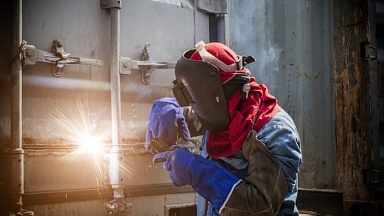The flagship project in this direction is the construction of a new 73-kilometres long railway line in Kazakhstan that will facilitate traffic along the Dostyk/Alashankou border point.
Congestion on the China-Kazakhstan border has intensified since the beginning of last year. According to data from KTZ, in October, the processing capacity of border ports decreased significantly due to the need for epidemic prevention and control.
Taking the Dostyk/Alashankou border crossing as an example, China currently receives only 5 to 8 trains through it every day. The number of daily trains used to be 18, and, understandably, this reduction has led to immense border congestion. After consultation between the two countries, China said it would increase the number of freight trains to and from Kazakhstan as soon as possible but did not specify the specific increase.
New railway line
After the two sides reached an agreement, the construction of a new railway line in Kazakhstan stood out from the agenda. Nurlan Igembaev, CEO of Harbin Railway KTZ, said that a new railway bypassing the Dostyk/Alashankou border crossing is expected to be completed and put into use next year. The new line will run through Almaty on the southeast border of Kazakhstan and will be 73 kilometres long.
The Chinese side promised to restore the Dulata border crossing near Almaty and approximately 90 kilometres away from the Khorgos border crossing and carry out additional construction work to ensure smooth and safe transportation during the pandemic.
Previously, to improve processing capacity, a new railway terminal called Dostyk TransTerminal was built at the China-Kazakhstan border. The terminal was put into trial operation for the first time in June this year. In August, it began to process three trains a day and will increase to six or even twelve trains per day in the future. According to its operator PTC Cargo, after fully completing the site’s construction, it will provide an additional capacity of 700,000 TEU for transiting China-Europe trains.




